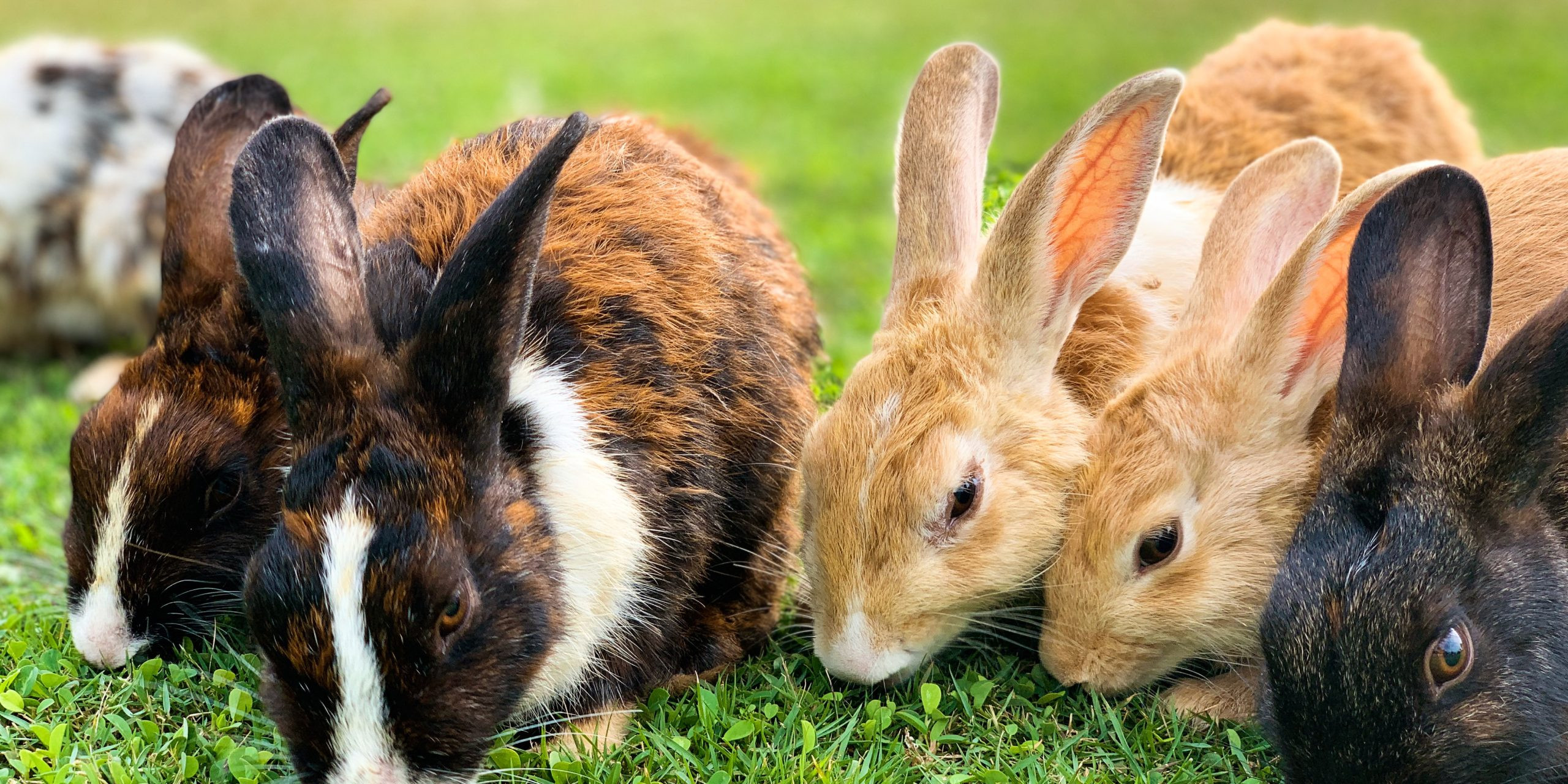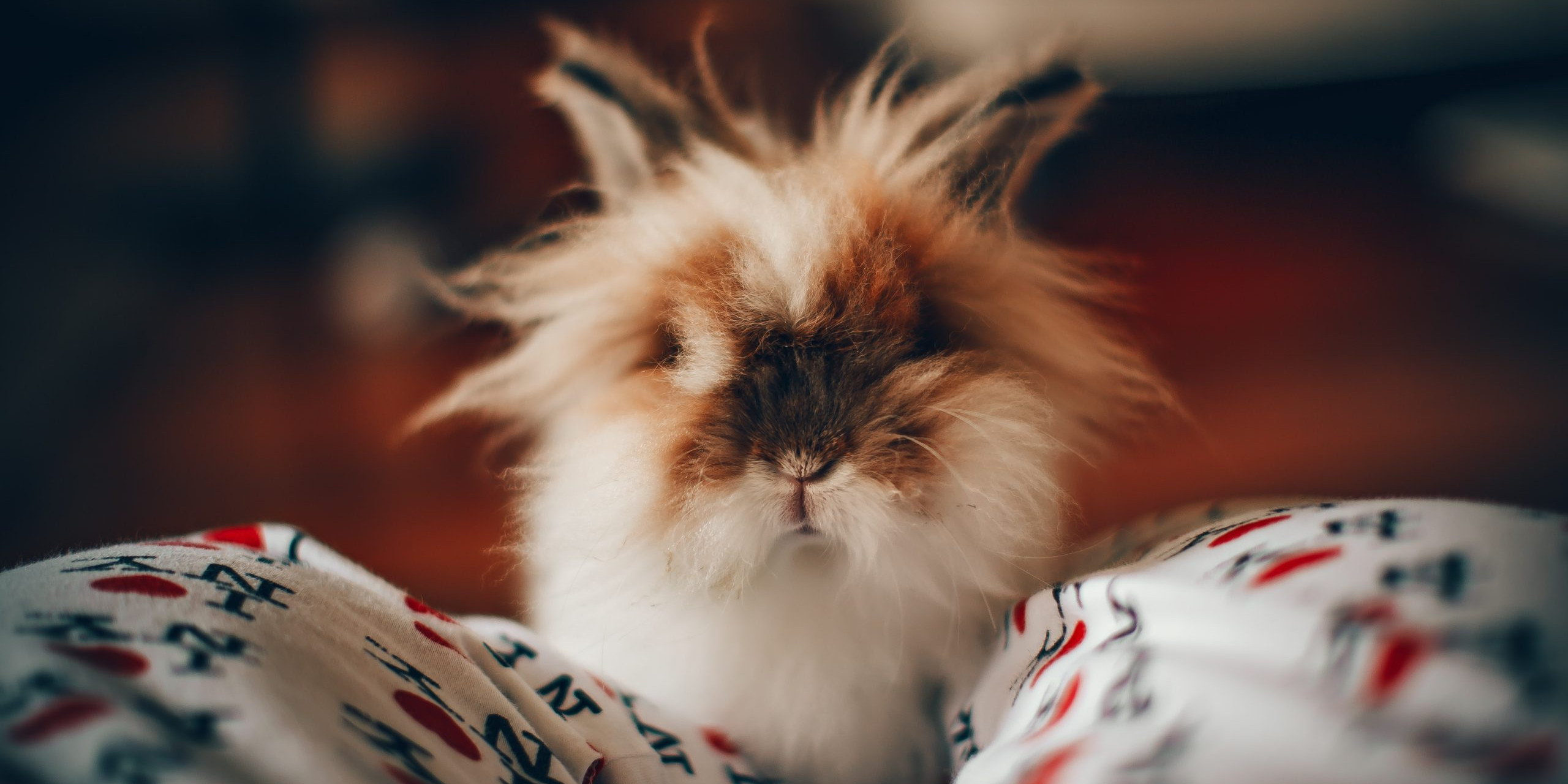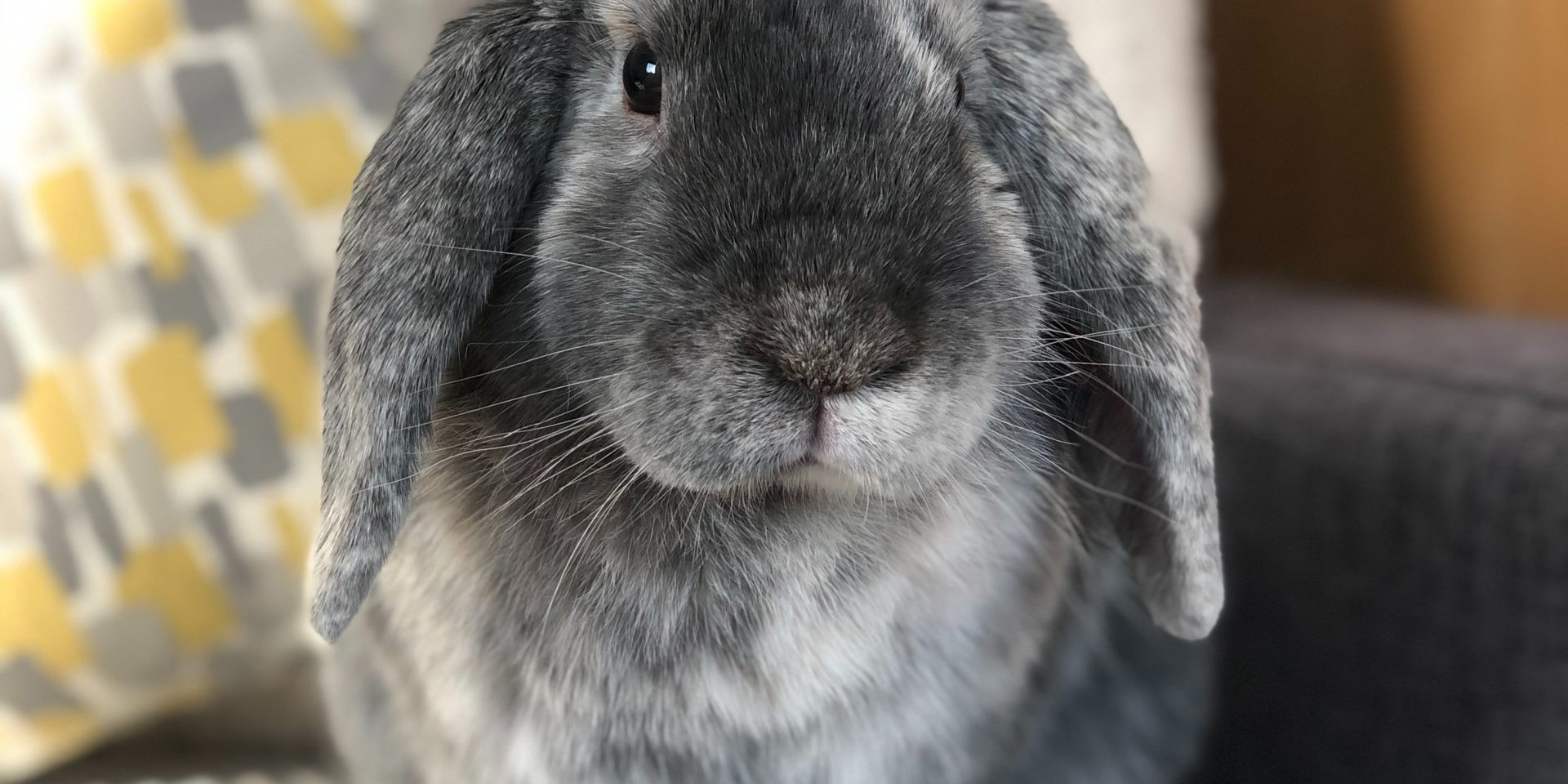Rabbits are not just adorable creatures with fluffy tails and twitchy noses; they’re a world of diversity waiting to be explored. With over 60 domestic rabbit breeds, each boasting its unique charm and characteristics, the journey to find your perfect bunny buddy is nothing short of exciting. Whether you’re a first-time rabbit parent or looking to add another furry member to your family, understanding the nuances of different rabbit breeds is crucial. This guide dives into the rabbit hole (pun intended!) to help you navigate the world of rabbit breeds, focusing on their history, popular types, and essential considerations for making the right choice.
Jump to:
A Hop Through History: The Domestication of Rabbits
Rabbits have hopped a long way from their wild ancestors to become one of the most beloved pets today. Their journey of domestication is both fascinating and relatively recent in the grand scheme of pet history. Understanding this evolution not only connects us to our furry friends but also sheds light on the diversity of breeds we see today.
Register for our latest in-depth reviews and product round-ups from the experts
Enter your email address below to receive our twice monthly reviews emails.
By entering your details, you are agreeing to our terms and conditions and privacy policy. You can unsubscribe at any time.
The Origin Story
- Domestication Timeline: Rabbits were domesticated around 1,400 years ago, a blink in evolutionary terms.
- From Wild to Mild: The transition from wild European rabbits to diverse domestic breeds.
Evolution of Breeds
- Selective Breeding: Human intervention played a significant role in developing different rabbit breeds.
- Diversity Explosion: From utility to companionship, the purpose behind breeding led to the variety we see today.
Popular Rabbit Breeds: More Than Just Cute Faces
When it comes to choosing a rabbit breed, the options can be overwhelming. Here’s a look at some of the most popular breeds, each with its unique flair.
The Lionhead Rabbit
- Distinctive Mane: Known for its lion-like mane, this breed is as charming as it is unique.
- Personality Plus: Friendly and curious, making them great companions.
The Flemish Giant: Gentle Giants of the Rabbit World
- Size Matters: Weighing over 16lbs, they’re one of the largest rabbit breeds.
- Calm and Collected: Known for their laid-back nature, perfect for a relaxed household.
The Holland Lop: Compact and Adorable
- Small but Mighty: Averaging 3.5lbs, they’re ideal for smaller living spaces.
- Ears to Love: Their lopped ears and cute build make them irresistible.
The Netherland Dwarf: Tiny and Energetic
- Pocket-Sized Bunnies: Weighing around 2.5lbs, they’re perfect for those who love miniature pets.
- High Energy: They’re lively and active, ideal for those looking for a playful pet.
The Continental Giant: The Majestic Breed
- Impressive Size: Averaging 18-22lbs, they’re the titans of the rabbit world.
- Intelligent and Interactive: They thrive on human interaction, making them great for engaging owners.
The Mini Rex: Velvety and Vibrant
- Soft to the Touch: Known for their velvety fur, they’re a tactile delight.
- Compact and Manageable: Weighing around 4.5lbs, they’re easy to handle and care for.
The Polish Rabbit: Small and Sophisticated
- Aristocrats of the Rabbit World: Weighing 2-3lbs, they’re known for their elegant appearance.
- Peaceful and Friendly: Their calm demeanor makes them suitable for families.
The French Lop: The Sweethearts of the Rabbit Community
- Medium-Sized Marvels: Weighing around 14lbs, they’re a perfect middle-ground breed.
- Calm and Intelligent: Known for their sweet nature and smart personality.
The American Fuzzy Lop: The Social Butterfly
- Playful and Active: They’re known for their sociable and curious nature.
- Unique Fur: Their wooly fur requires regular grooming but is incredibly soft.
The American Sable: Elegance Personified
- Beautiful Sable Coat: Their striking coat is a sight to behold.
- Friendly and Energetic: They’re social and enjoy interaction, making them great family pets.
Choosing the Right Rabbit Breed: More Than Just a Whim
Selecting a rabbit breed is not just about falling for a cute face; it involves careful consideration of various factors to ensure a happy, healthy life for your bunny and a fulfilling pet ownership experience for you.
Size and Space: A Big Decision
- Space Requirements: Larger breeds like the Flemish Giant need more space, while smaller breeds are more apartment-friendly.
- Consider Your Living Situation: Assess your home environment to determine the best fit.
Grooming and Care: Not Just a Brush-Off
- Grooming Needs: Breeds like the Lionhead and American Fuzzy Lop require regular grooming.
- Health Considerations: Some breeds are prone to specific health issues; research is key.
Temperament and Behavior: Personality Matters
- Activity Level: Energetic breeds like the Netherland Dwarf need more playtime and interaction.
- Social Needs: Some rabbits are more independent, while others thrive on companionship.
Rabbit Breeds for First-Time Owners: A Beginner’s Best Bet
For those new to the rabbit world, certain breeds are more forgiving and easier to care for.
The Holland Lop: A Beginner’s Dream
- Easygoing Nature: Their calm demeanor makes them ideal for first-time owners.
- Manageable Size: Small and easy to handle, they’re great for learning the ropes of rabbit care.
The Mini Rex: Low Maintenance, High Affection
- Velvety Fur, Easy Care: Their fur is low-maintenance, and they have a friendly disposition.
- Compact Size: Easy to accommodate and care for, making them a great starter pet.
The Polish Rabbit: Gentle and Undemanding
- Calm and Easygoing: Their peaceful nature makes them less intimidating for new owners.
- Small Space Friendly: Ideal for apartment dwellers or those with limited space.
Where to Find Your Rabbit Breed: A Journey to Companionship
Finding the right rabbit is a crucial step in your pet parent journey. Here’s how to navigate this path responsibly.
Breeders vs. Rescue Centers: Making the Ethical Choice
- Breeders: Ensure they are reputable and prioritize the health and well-being of their rabbits.
- Rescue Centers: Adopting from shelters gives a second chance to rabbits in need.
Identifying Reputable Sources: A Checklist
- Health Records: Ensure they provide detailed health histories of their rabbits.
- Living Conditions: Check that the rabbits are kept in clean, spacious environments.
- Knowledgeable Staff: They should be well-informed about rabbit care and breed specifics.
Assessing Rabbit Health: Signs of a Happy, Healthy Bunny
When you visit a breeder or shelter, knowing how to assess the health of a rabbit is key.
Signs of a Healthy Rabbit
- Bright, Clear Eyes: Indicative of good health.
- Clean Ears: Check for any signs of infection or mites.
- Good Appetite: A healthy rabbit will have a steady appetite.
Red Flags to Watch Out For
- Lethargy: Lack of energy can be a sign of illness.
- Overgrown Teeth: This can lead to eating difficulties.
- Unkempt Fur: Could indicate neglect or health issues.
Rabbit Breed-Specific Care: Tailoring to Their Needs
Each rabbit breed comes with its unique care requirements. Understanding these will ensure a happy, healthy rabbit.
Dietary Needs: What’s on the Menu?
- Hay: The staple of a rabbit’s diet, providing essential fiber.
- Fresh Vegetables: A variety of veggies keeps their diet balanced.
- Pellets: High-quality pellets can supplement their nutritional needs.
Exercise and Enrichment: Keeping Your Bunny Bouncing
- Playtime: Rabbits need regular exercise to stay healthy and happy.
- Toys and Puzzles: Mental stimulation is as important as physical exercise.
Health Concerns and Veterinary Care: Prevention is Better Than Cure
- Regular Check-ups: Essential for early detection of health issues.
- Vaccinations: Some breeds may require specific vaccinations.
Creating a Rabbit-Friendly Environment: Their Haven
Your rabbit’s living space is crucial for their well-being. Here’s how to create a safe and stimulating environment.
Housing and Space Requirements: Room to Roam
- Cage Size: Should be large enough for them to move freely.
- Safe Materials: Ensure all materials are non-toxic and safe for chewing.
Safe and Stimulating Environment: A Home They’ll Love
- Chew Toys: Rabbits need to chew to keep their teeth healthy.
- Hiding Spots: Provide areas where they can retreat and feel safe.
Grace Holthaus
Meet Grace, your guide to bunny brilliance. From the rolling hills of England, she shares tips on rabbit care, from grooming to playtime. Join her on a hop-tastic journey celebrating every fluffy tail and twitchy nose. Trust Grace for a regal and enriching rabbit experience.
Related Posts
Understanding Rabbit Breeds and Their Unique Behaviors
Rabbits are not just cute and fluffy; they’re complex creatures with…
Adopting Different Rabbits: A Journey into Rabbit Breeds and Adoption
Rabbits, with their adorable twitching noses and fluffy tails, have hopped into…
Understanding Rabbit Breeds and Their Natural Habitats
Rabbits, with their fluffy tails and twitching noses, are more than just…




